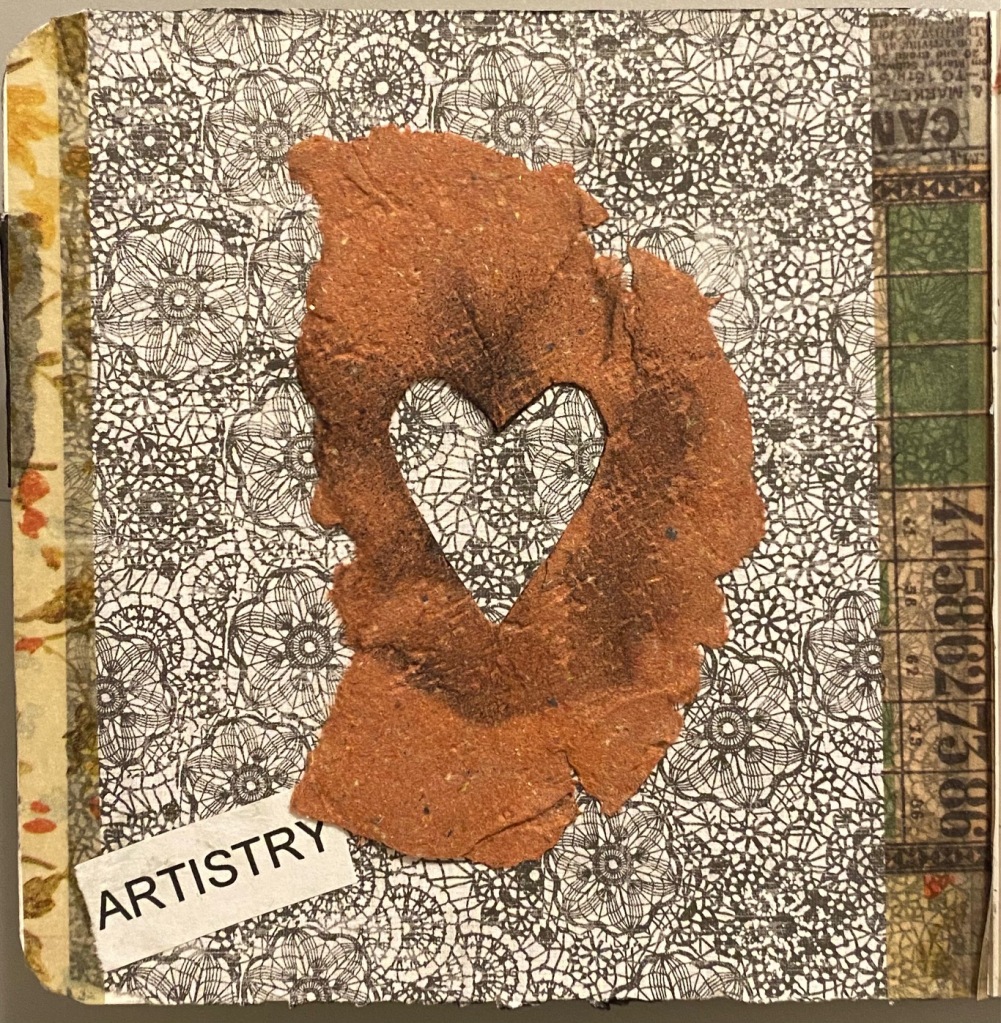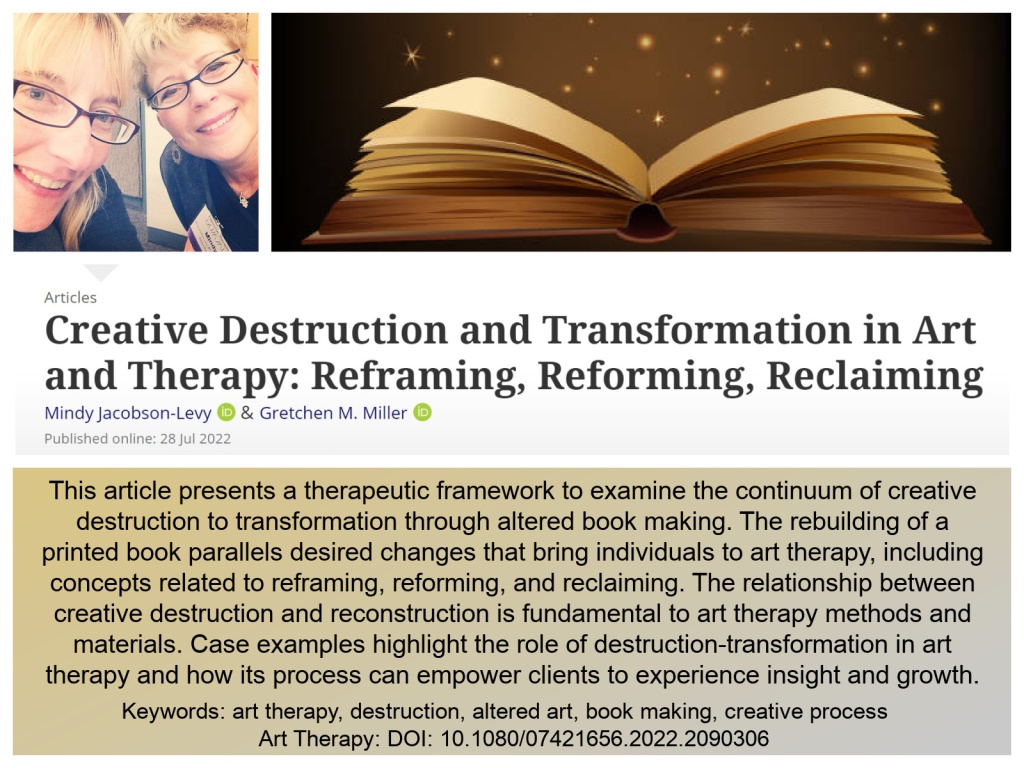I have just finished my 2023 altered book of intentions and wanted to share the pages and intentions I identified for this year. This year marks 15 years of this creative practice!
The process begins with preparation, including finding the children’s board book I will be using, getting the book ready to create, gathering materials, and prepping the creative space I will be working in. I then direct my focus to intention, which includes creating a list of words I want to guide me throughout the new year ahead with meaning and purpose. From this list, I shift to creation, crafting a page inside my altered book that symbolizes or embodies each intention.

This year I chose the intentions: Meaning, Resolve, Respite, Anchor, Tempo, and Artistry. I primarily used material from my paper stashes, magazine photo collage, dictionary pages, ink, paint pens, washi tape, handmade paper, and oil pastels in a 5×5 children’s board book.


Meaning

Resolve

Respite

Anchor

Tempo

Artistry – The heart piece was done with the handmade paper I made in a BlendJet blender I recently purchased— I wrote on small pieces of paper things I wanted to let go of/transform, ripped them up, put them in the blender to pulp, and then formed new paper from it— other pages/intentions also include hearts with the same handmade paper….
As the year unfolds, I revisit my altered book of intentions to reflect on and witness their transformation. I am grateful I am also able to participate in this process year-round within an inspiring digital community of women who are engaging in this creative practice as part of Prepare.Intent.Create.Transform workshops.
What are some intentions you have for this year?
















You must be logged in to post a comment.